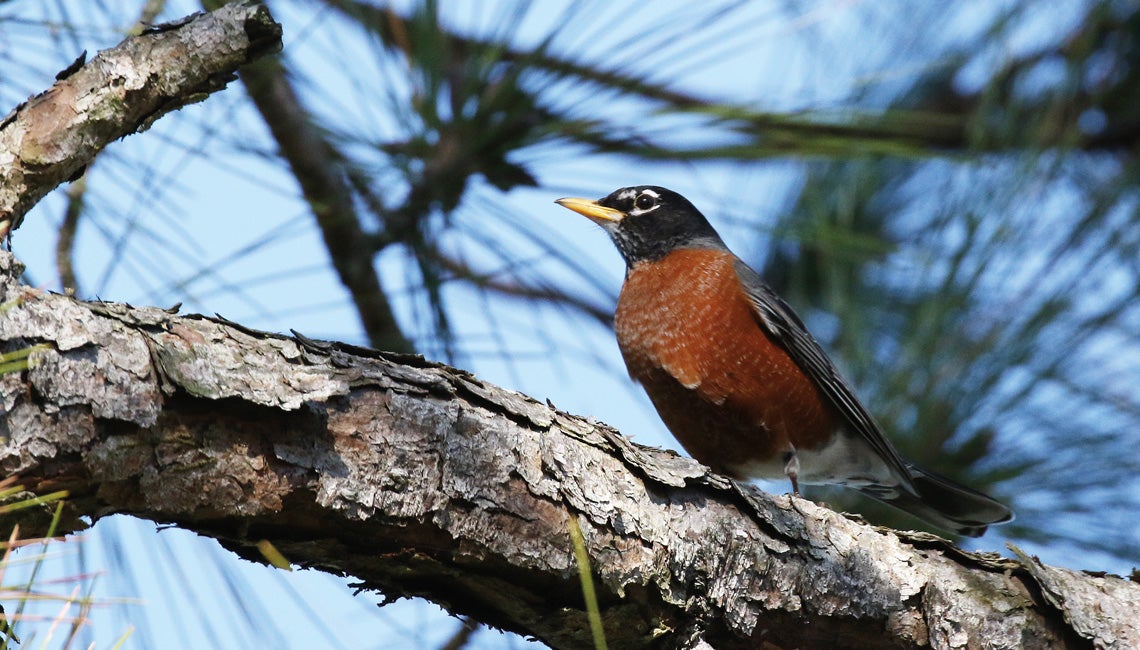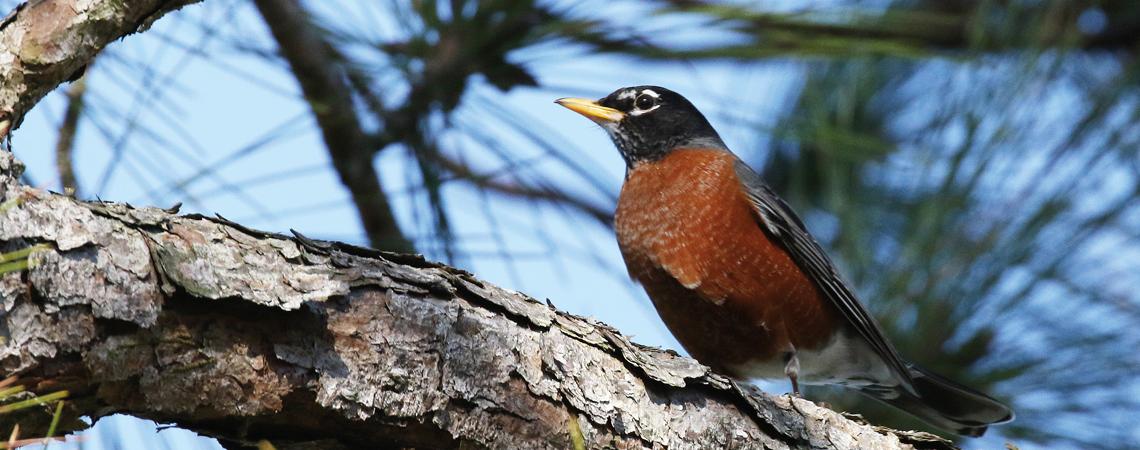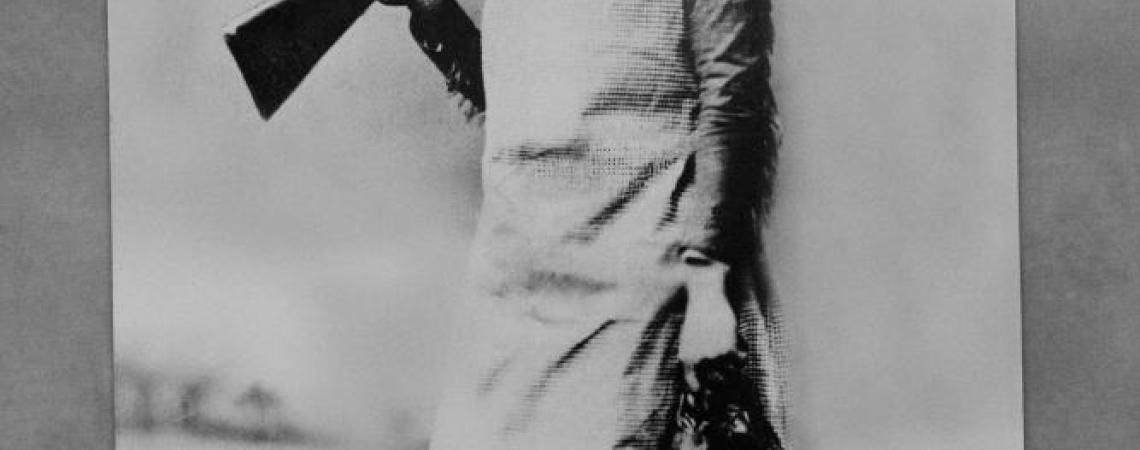Hunting earthworms on our lawns or building nests in our shrubbery, robins are so ubiquitous today that we barely give those attractive, red-breasted songbirds a second thought.
But there was a time when they weren’t so common, and the reason is shocking: Robins were once hunted and eaten by humans.
The late 1800s and early 1900s was the era of the market hunter in America. With few laws yet in place to protect wildlife, anything and everything was fair game. Any wild animal that could be killed and sold for profit was in jeopardy.
Did you know robins were once hunted and eaten by humans?
The slaughter began with large mammals — elk and deer in the East, bison in the West. Once those populations were decimated, the professional hunters moved on to waterfowl: ducks, geese, and swans. After those species were depleted, shorebirds were next in line. Smaller than most waterfowl, shorebirds made up for their small size by numbering in the millions. They also decoyed readily and tasted good on the dinner table.
Last on the list was songbirds.
It was not just country folk who consumed songbirds. Big-city gourmands enjoyed noshing on them, too, and robins were at the top of their list. In fact, the American robin became the standard against which most other small birds were measured, gastronomically speaking.
In 1867, a New York butcher named Thomas F. DeVoe authored The Market Assistant: A Brief Description of Every Article of Human Food Sold in the Public Markets of New York, Boston, Philadelphia, and Brooklyn.
In his treatise, DeVoe devoted a portion to songbirds, opining that blue jays, for example, were tasty, but “not so well flavored as the robin.” He also said that the high-hole (known today as the Northern flicker) was “not so tender as the robin.”
DeVoe went on to add that “large numbers of [robins] are found in our markets, and thousands are also shot by sportsmen in the months of September and October, when they are fat and delicate eating.”
In the 20th century, both subsistence hunters and market hunters plied their trades in some Southern states, where wintering robins gathered by the hundreds of thousands in nighttime roosts. Working in teams, one person with a torch would climb a tall tree while others on the ground with clubs and long poles startled the roosting birds into flight. Drawn to the torch’s light shining near the top of the tree, robins were grabbed by hand, killed, and shoved into a sack. One team could bag 300 to 400 robins per night, and with as many as 100 or more hunters with torches and clubs at work in a given spot, robins were killed by the wagonload.
Robin hunting became so pervasive throughout the South, where some states had declared the species a gamebird, that the National Association of Audubon Societies (today known as the National Audubon Society) finally stepped in. The organization worked with teachers in the region to create grade-school clubs encouraging “sympathy for birds.” That effort eventually became the successful Junior Audubon program.
What ultimately ended the commercialization of robins and other songbirds was the passage of the federal Migratory Bird Treaty Act in 1918. The new law was somewhat misleading in its title, as it protected all native North American birds with the exception of nonmigratory gamebirds (the sport hunting of which today is still regulated by state wildlife agencies).
The good news is that robin populations have since recovered and are once again healthy and flourishing. “The best way to realize how abundant they are is to listen to the spring and summer dawn chorus, when most birds are in full voice,” said Jim McCormac, author of the field guide Birds of Ohio. “American robins generally greatly outnumber all other singers.”
Ohio’s most famous market hunter
Ohio’s most well-known market hunter was a rather diminutive young woman from Darke County who shot bobwhite quail and other birds on the wing, which she sold to upscale restaurants in the Cincinnati area to help support her struggling family. Her name was Phoebe Ann Mosey, but she was better known by her pseudonym, Annie Oakley (1860–1926).











